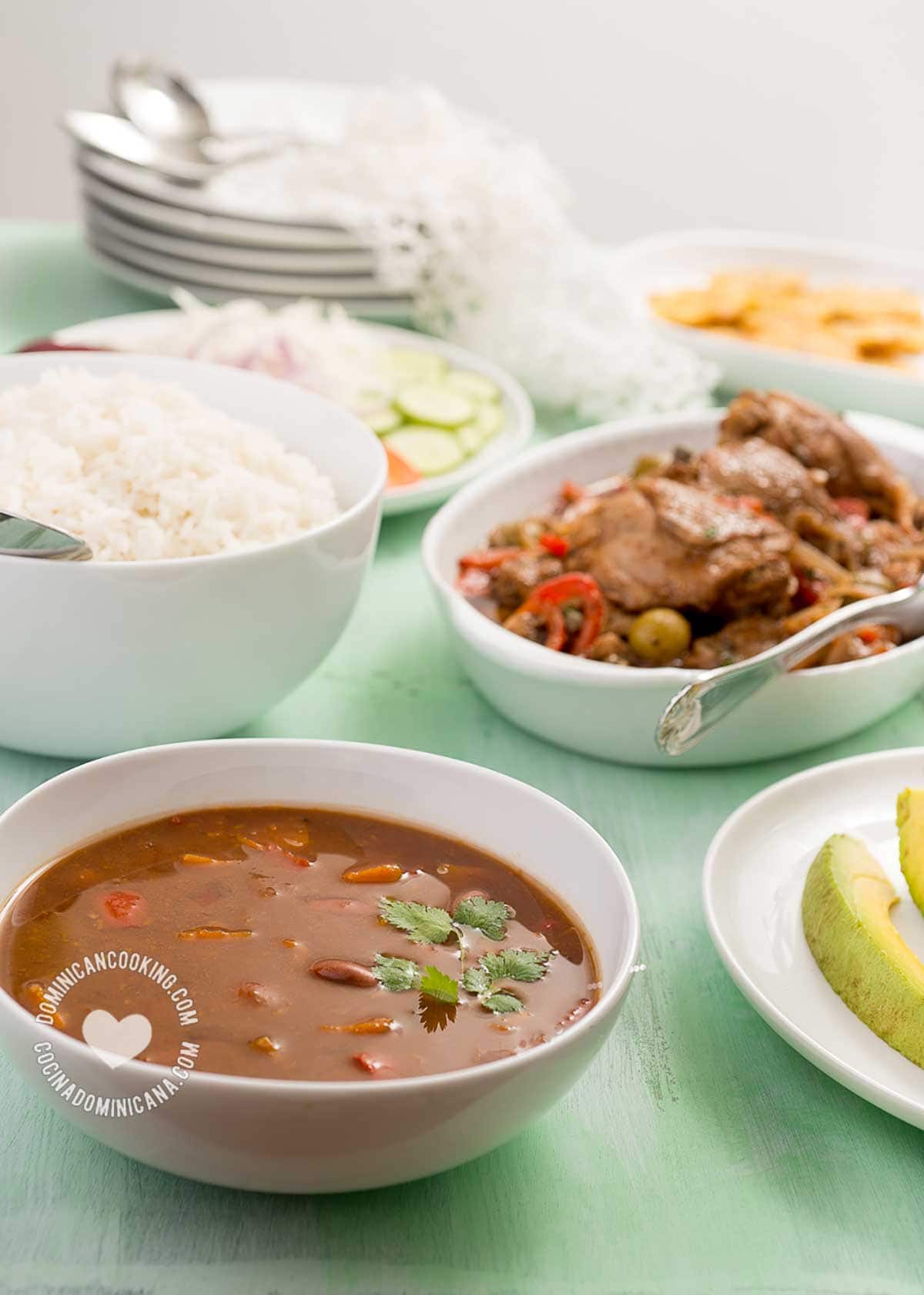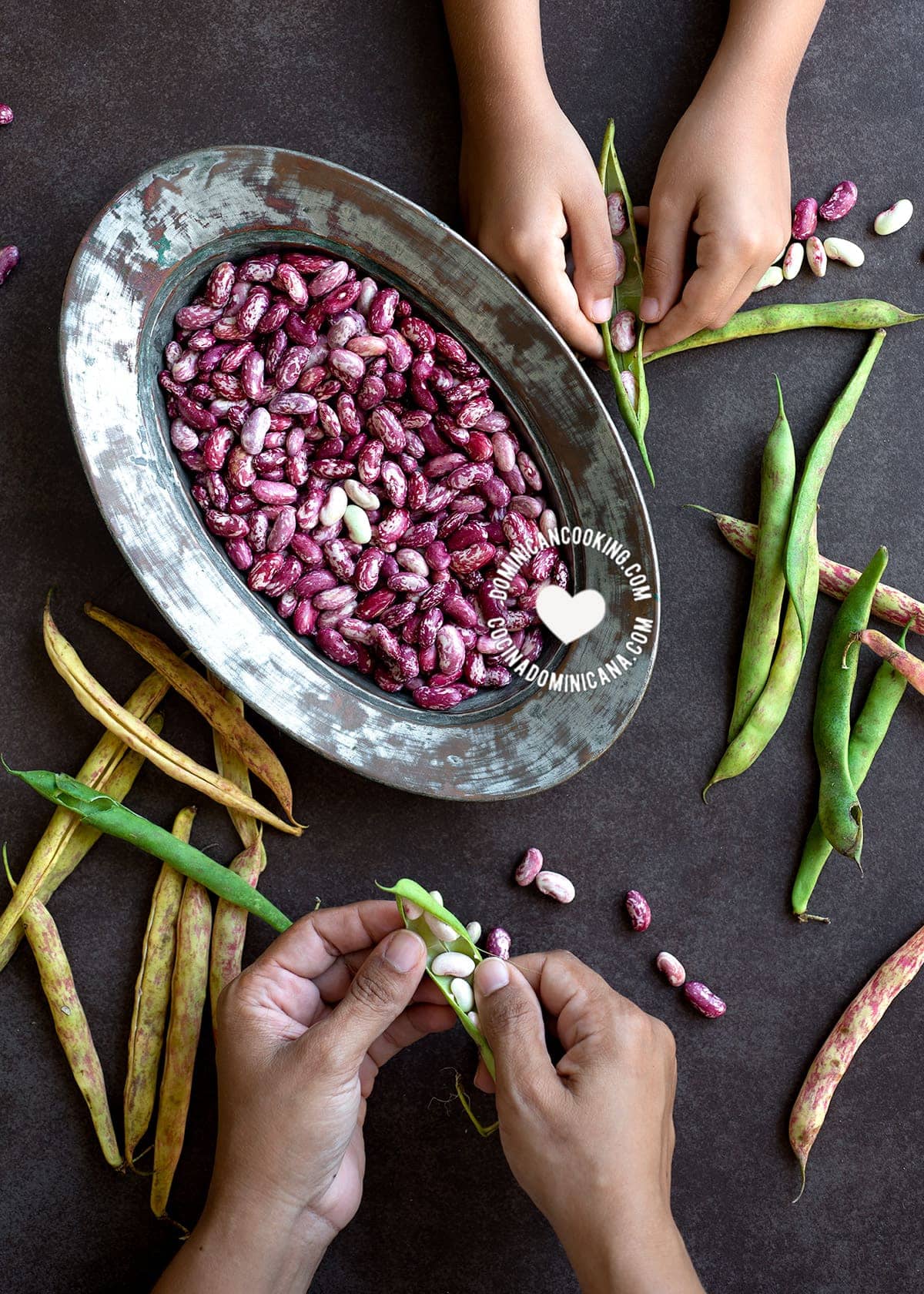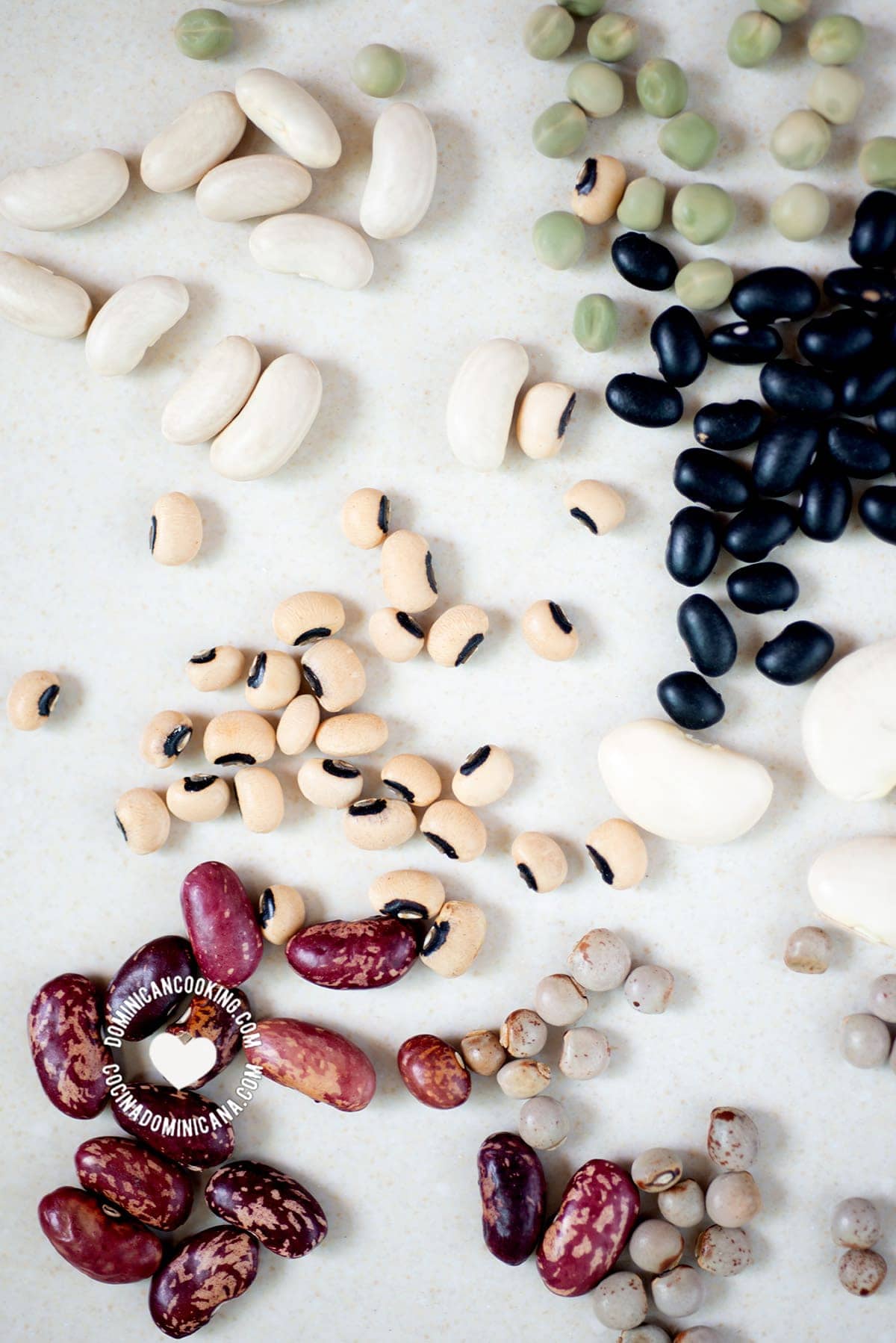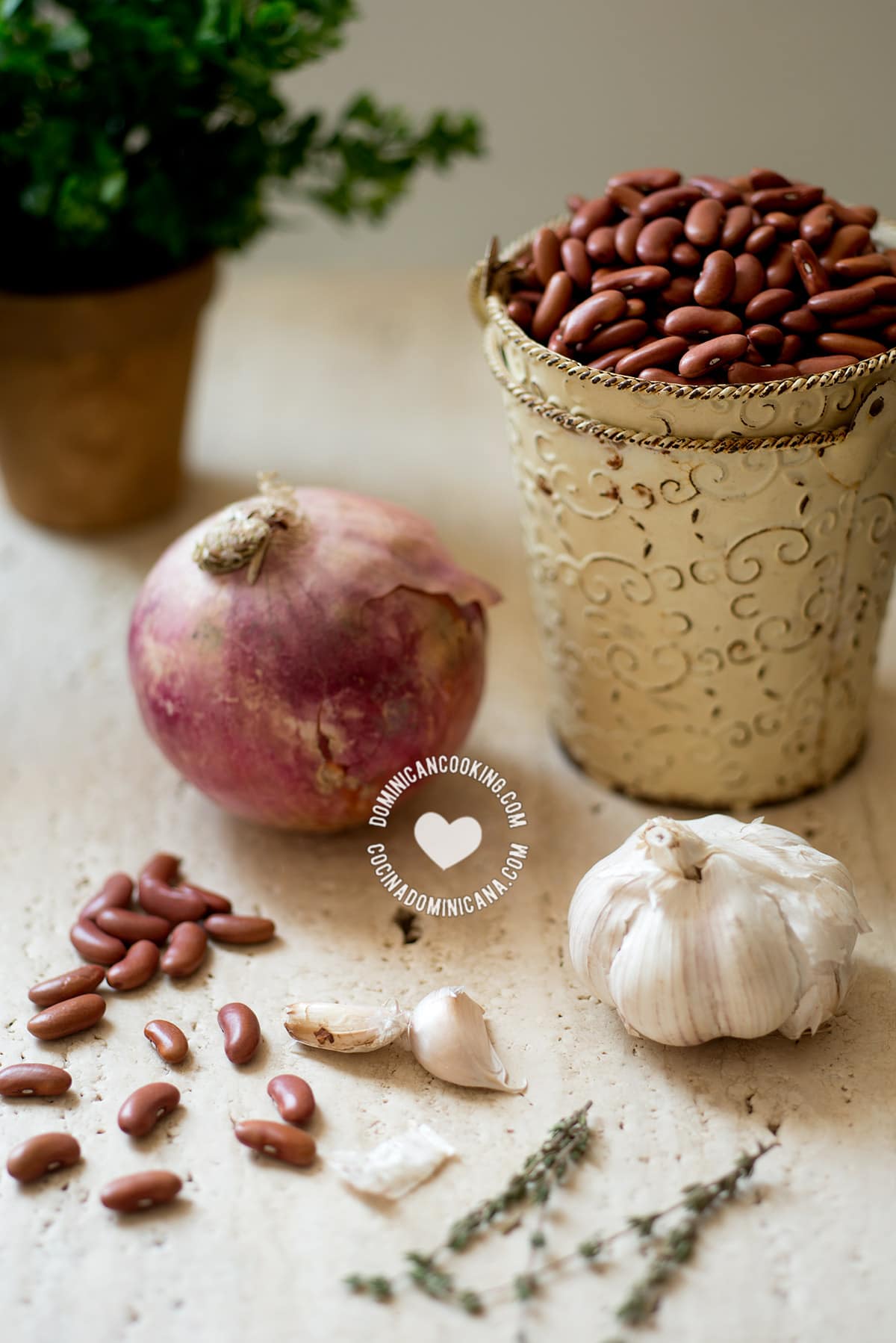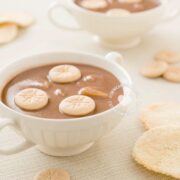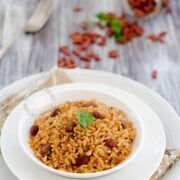Habichuelas Guisadas is one of the dishes that appear almost daily at the lunch table and is one of the tests of the competent Dominican home cook.
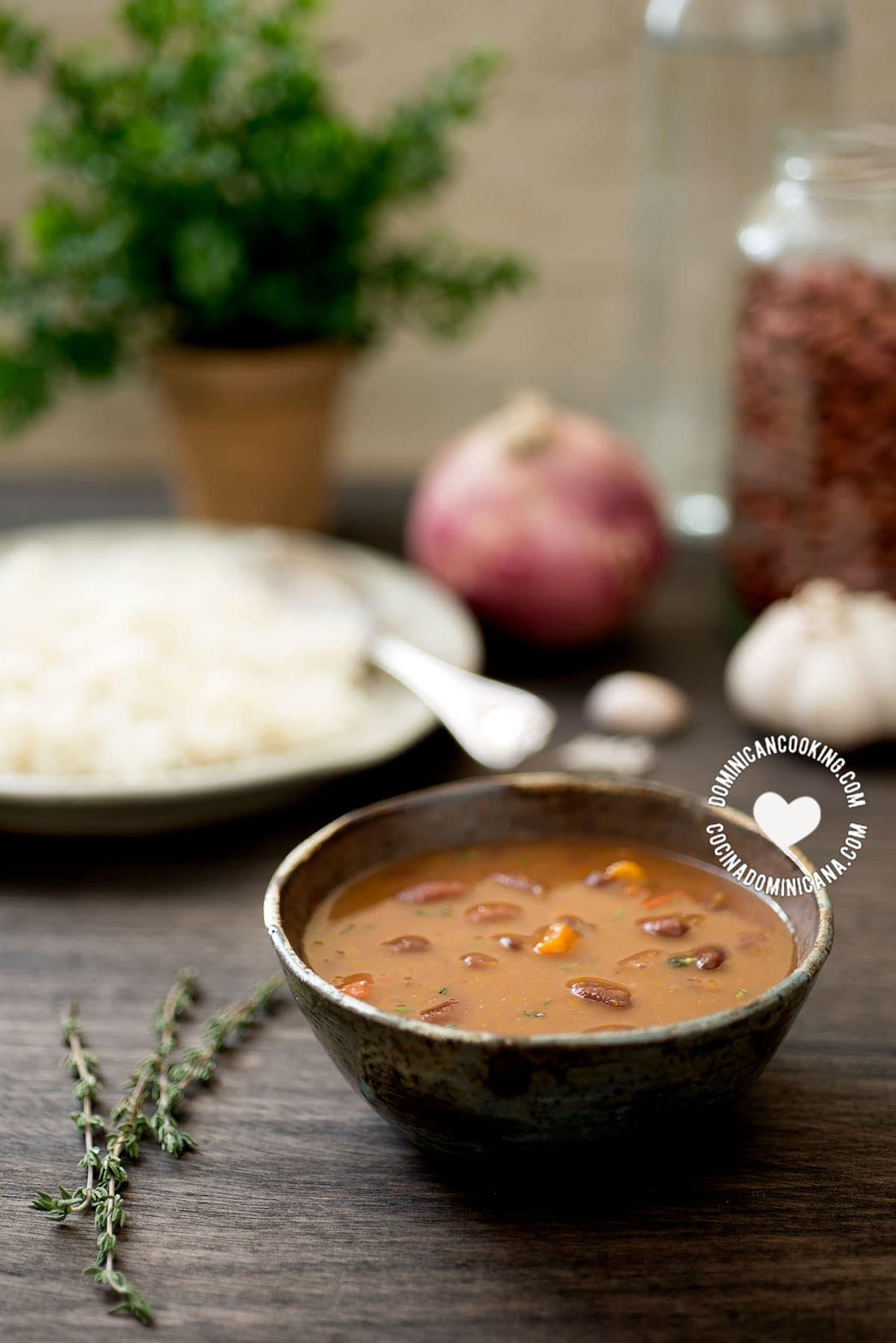
Why we ❤️ it
Dominican Habichuelas Guisadas is one of the components of the "Dominican flag" (our traditional lunch) and appears almost every day at the table at "la comida" (lunch) time.
"Dominican cuisine is more than just rice and beans" could be the motto of our blog, and probably would be if it were a little more flashy. Rice with stewed beans is one of the most common combinations on the Dominican table.
What are habichuelas?
If you're a Dominican you already know the answer, for those who do not know it: habichuelas are what we Dominicans call beans. Classified as habichuelas we have cranberry, pinto, red kidney, navy, and black beans. Other types of beans and pulses have their own specific names: habas (butter beans), guandules (pigeon peas), judías (green peas), lentejas (lentils), frijoles partidos (split peas), etc. Check our beans recipes to see more of these.
When we say habichuelas guisadas, in general, we refer to stewed red beans or cranberry and pinto. For the others, it will be necessary to be more specific: "habichuelas negras guisadas", for example. In general, the recipe will be the same for all habichuelas.
Puerto Rico also has its own Puerto Rican habichuelas, but they are not exactly the same, and that's a subject for another blog.
How are Dominican beans served?
Habichuelas Guisadas is somewhere between soup and sauce. The beans should have some "salsa" meaning liquid, but still be very creamy, because it is used to "wet" the rice --or the concón, if you are lucky enough to get some. The beans should never resemble Mexican refried beans, for example, nor should they be so watery that they look like broth.
About our recipe
We have to emphasize, as we often do, that "cada cocinero tiene su librito" (each cook has his own little cookbook). There are no two homes where these stewed beans recipes are identical. Moreover, there are differences between regions; for example, this is my own version. This is how they were cooked in my parental home. My family is from La Línea and part of Cibao, and where ditén (thyme) is an essential part of "las habichuelas". And yeah, you can shorten it like that and your host/waiter will know what you're talking about.
If you are familiar with other versions, go ahead, give your beans your personal / family / regional touch. And I'll love it if you leave in the comments what makes yours special.

Recipe
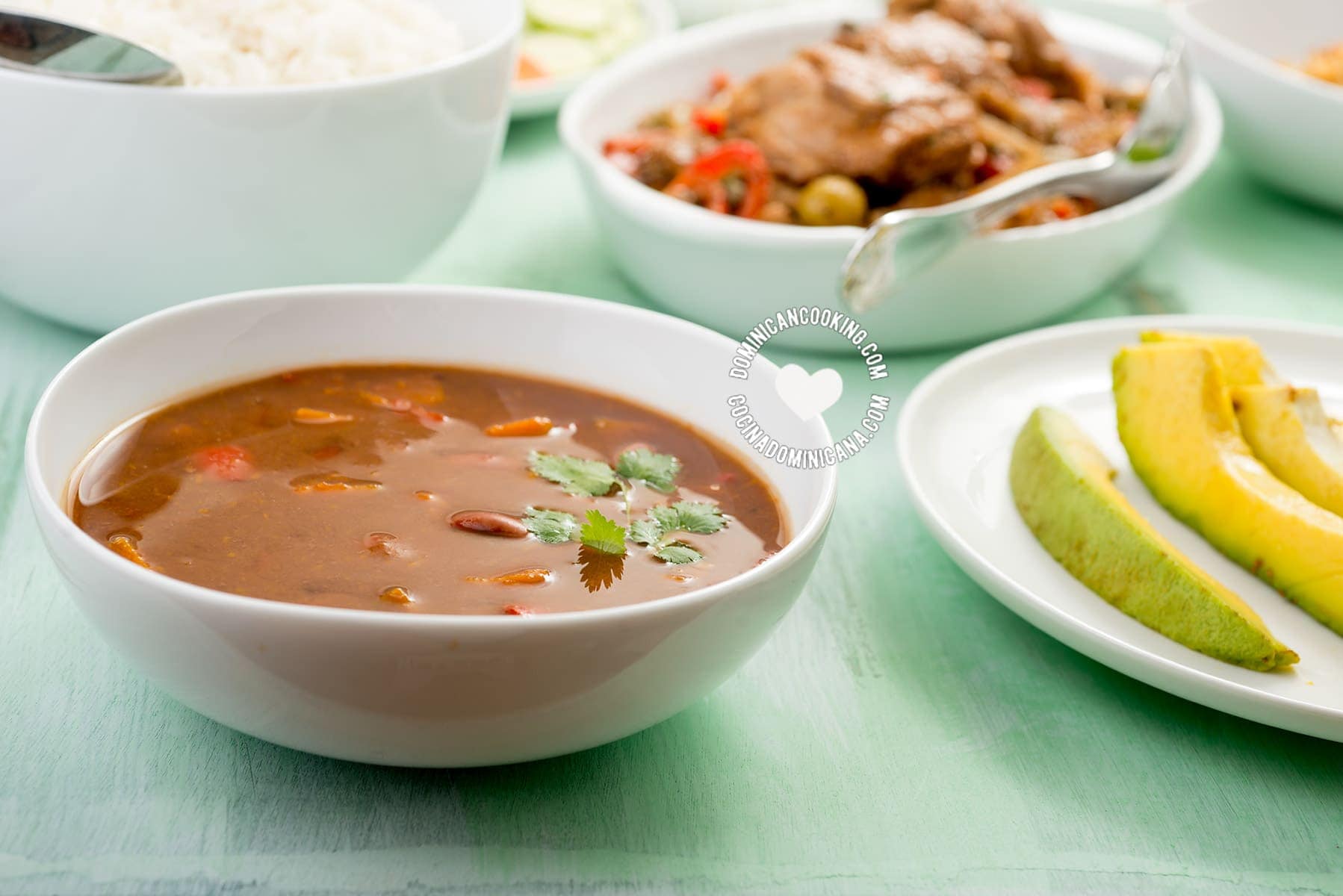
[Recipe + Video] Dominican Beans (Habichuelas Guisadas)
Ingredients
- 2 cups dry pinto beans, (or cranberry, or red kidney)
- 1 tablespoon olive oil
- ½ teaspoon oregano (dry, ground)
- 1 bell pepper, chopped
- 1 small red onion, cut into four quarters
- 2 cloves garlic, crushed
- 1 cup diced auyama (kabocha squash)
- 1 cup tomato sauce
- leaves from a celery stalk, chopped (optional)
- 4 sprigs fresh thyme, or 1 teaspoon of dry thyme (optional)
- ½ teaspoon chopped fresh cilantro
- 1 teaspoon salt, (or more, to taste)
Instructions
If you are using dry beans
- Soak the beans overnight.
- Remove the beans from the soaking water and boil in fresh water until they are very soft (may take up to an hour, or about 20 minutes in a pressure cooker.
How to make habichuelas guisadas
- Separate the beans from the boiling water. Set both aside.
- In a pot heat the oil over medium heat. Add oregano, bell pepper, onion, garlic, auyama, tomato sauce, celery, thyme and cilantro. Cook and stir for half a minute. Add the beans and simmer for two minutes.
- Pour in 4 cups of the water in which the beans boiled (complete with fresh water if necessary). Once it reaches a rolling boil, lightly mashed the beans with a potato masher to break them out of the skin and making creamier habichuelas. Cook until it reaches a creamy consistency.
- Remove the chunks of onion, as well as any stray twigs or large bits of herbs if you used fresh herbs. Season with salt to taste.
- Serve with the other components of La Bandera Dominicana.
Video
Tips and Notes
Nutrition
Nutritional information is calculated automatically based on ingredients listed. Please consult your doctor if you need precise nutritional information.


